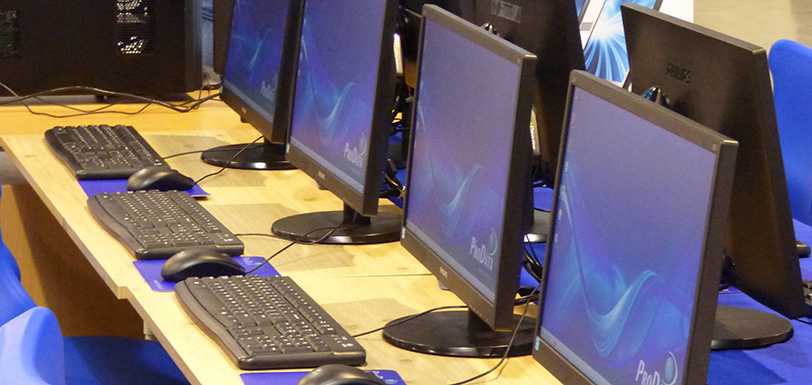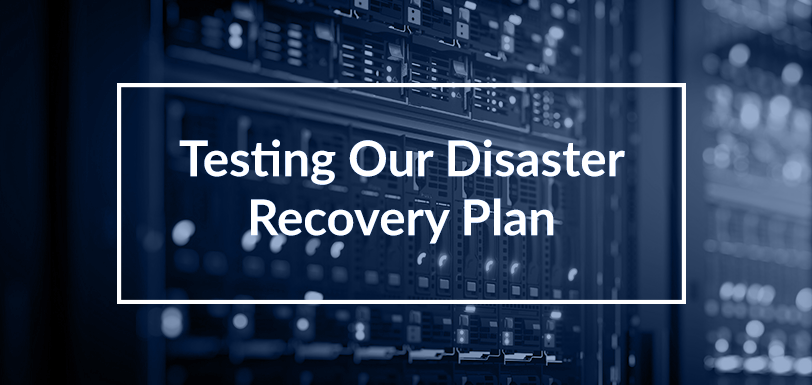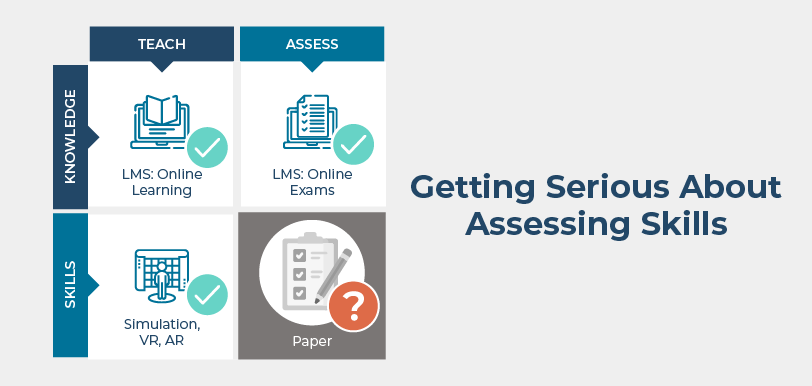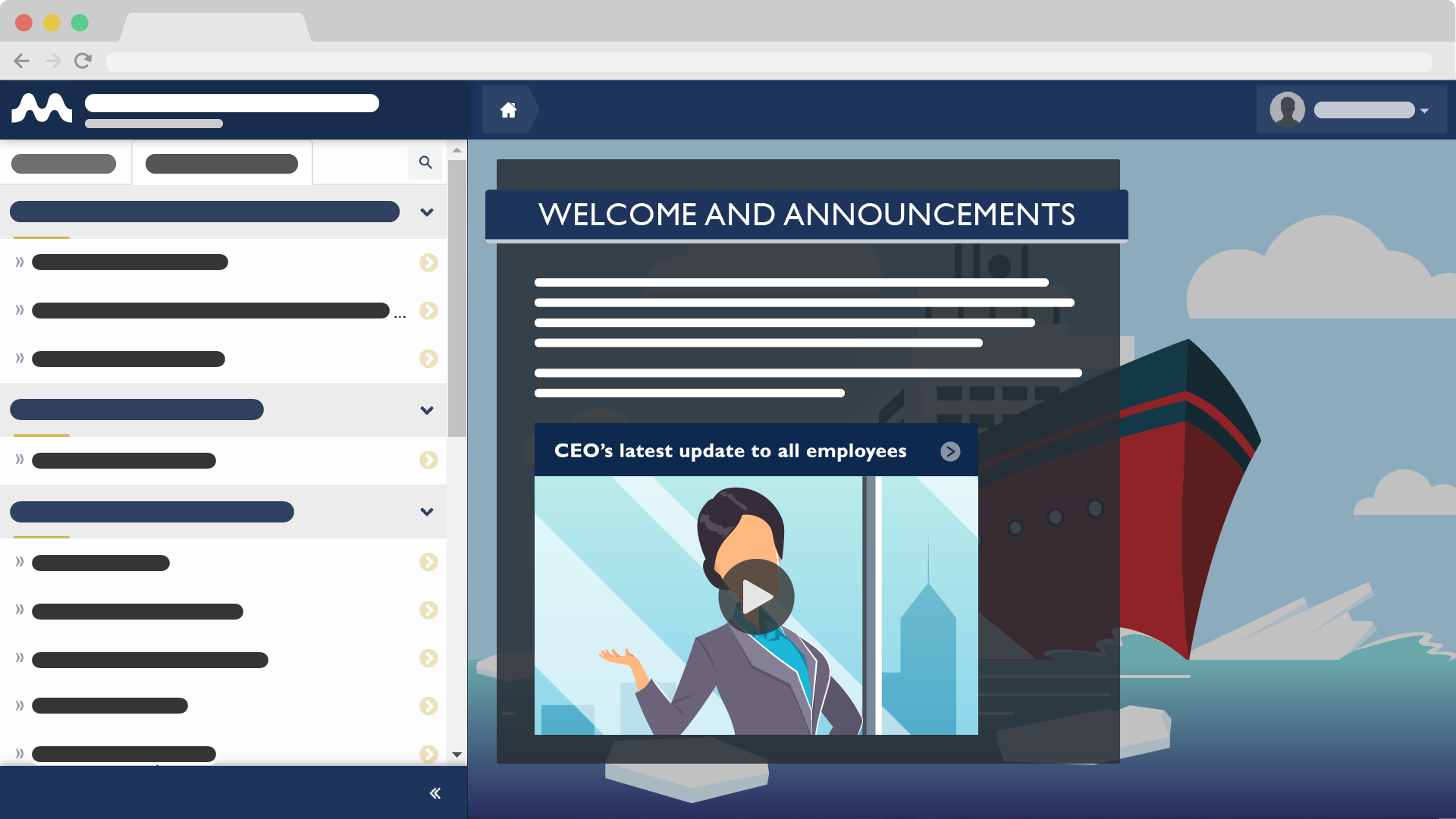The Effective Use of Maritime CBTs in an LMS
Dec 7, 2016 Murray Goldberg 0 CBT, LMS, Maritime TrainingIntroduction
This is the second in a series of blog posts on the use of Computer Based Training modules (CBTs – often provided on CDs or similar) within a Learning Management System (LMS). This is important information for maritime organizations as the industry begins to mature in its use of learning technologies.
In the first article, I discussed what has happened in other industries as the their use of learning technologies evolved. I think there are important lessons there that can benefit maritime training. In a sense, what has been learned elsewhere is really about how to best use the tools that we have to maximize efficiency and to optimize training outcomes.
But before I jump in, please note that the next installment of this series will be looking at the mechanics of CBT use and content creation for maritime eLearning programs. If you have not already signed up for article notifications, but would like to be notified when the next blog post becomes available, please sign up here.
Now – let’s look at the use of CBTs together with an LMS.
Blending
Just as this is a story about optimizing efficiency and training outcomes, this is also a story about blending technologies. We have found that with learning in general, we can combine methods such as eLearning and face-to-face to improve training outcomes. Each mode has limitations and strengths not shared by the others, and by combining them we reap the benefits of both.
Similarly, when we speak about combining technologies such as learning management systems and CBTs, we recognize that the same argument applies. Learning management systems and CBTs each provide benefits that the others cannot provide. In a way, they are two different tools, that when used together produce a far broader and more complete array of benefits than either could alone.
Let’s examine why these tools work so well together in a little more depth, and then discuss the most effective ways of combining these two technologies.
Learning Management Systems – Strengths and Limitations
For those people new to learning management systems, it is important to understand what a learning management system is, and what a learning management system is not. A learning management system is not a course, nor is it learning content. Likewise, it is not a CBT.
Strengths
A learning management system is a piece of software technology that is used to deliver courses and learning content. It provides access to content, access to assessments, training analytics, and many other training management and delivery tools. These LMS features are critical for minimizing workload and efficient training in organizations. The insight that they provide through their metrics and analytics are necessary to understand how effective your training systems are, and to inform a process of continuous improvement. For that reason, learning management systems are used ubiquitously throughout most industries, worldwide.
Limitation
However, a learning management system is not content. Therefore, when creating an eLearning program, it is necessary to procure or create content – i.e. your courses. Without learning content, an LMS is just a shell waiting to be filled.
This raises an issue for organizations which employ eLearning – especially those who are building a new eLearning program: where does the content come from?
Content can come from a variety of sources:
- It can be re-purposed from existing course content (such as the materials used for face-to-face courses in the organization).
- It can be written from scratch.
- It can be purchased from a content provider either as off-the-shelf content, or custom-created content.
The choice of content source has real implications. First, if the content is created from scratch or re-purposed in-house from existing content, the quality of the result may be an issue. It is important to understand that the creation of high-quality, engaging and effective learning materials (delivered on-line or in-person) is not necessarily easy. The ability to do so is generally not a skill most people innately possess. And because you’ll be delivering this content over and over to potentially large audiences, there is an opportunity to really improve training by making sure that the content is of the highest calibre. Here, a trained instructional designer with maritime training experience can be a real (but rare and hard to find) asset.
Second, if the content is written from scratch either in-house or by an outsourced instructional designer, the process can be time consuming and expensive. This may be an expense that pays huge dividends through improved and more standardized training across your organization. We have seen great examples of this where accident rates have plummeted alongside insurance premiums due, in part, to greatly improved training. But it is still a real cost that has to be considered, and the time required to create that content may greatly elongate the timeline to reaping the benefits of improved training.
So – when considering the use of an LMS as a tool to improve training, the issues of “where does the content come from”, the expense of creating that content, and the time required to create it all have to be considered carefully. This (in some cases) is where CBTs can come in.
CBTs – Strengths and Limitations
Most people in the maritime industry are already quite familiar with CBTs. CBTs are, at their heart, content. There is very little “delivery or management” in a CBT. Generally, the CBT is inserted into the computer (if it comes on a CD), and the trainee progresses through the learning pages to the end where an assessment is usually found. Sometimes CBTs are delivered via a form of LMS.
Until recently, generally the only options for CBT customers in the maritime industry were to use the CBT alone (no LMS), or use it within the LMS provided by the maker of the CBT. With the emergence of the content-agnostic LMS (an LMS which will play content from any vendor) and more importantly with the willingness of innovative CBT vendors such as Seagull to let their CBTs be delivered in other LMSs, customers have tremendous options. Feel free to refer back to my previous article to see why I believe this to be an extremely customer-friendly and training-positive move for the maritime industry.
But considering the use of a CBT without an LMS, or with a limited LMS, what are the strengths and limitations?
Strength
The main, and overwhelmingly significant, strength is the CBT’s combination of quality and price. CBTs are produced by companies with the aim of selling as many as possible. Therefore, most of the titles are of interest to large portions of the maritime industry. For example, courses such as personal safety, maritime english, and so on, are of interest to almost every operator.
With a comparatively large sales volume, the CBT vendor is able to invest significant time and money into the creation of a high quality product, yet still sell them at a reasonable price. The effect is as if all maritime operators got together to co-fund the creation of a course – very efficient. Therefore, for courses that are of generally high interest to a large number of operators, it is hard to beat the providers of CBTs for their combination of quality and price.
Limitations
While CBTs do offer excellent content at good value, they are not a complete training solution. For example:
- They generally cover concepts which are generic to the industry. CBTs either cannot cover company-specific courses, or, if they do, are expensive to produce.
- CBTs are not easily able to offer adaptive vessel-specific training. This is a technique where the LMS asks the learner what vessel they are training for, and then automatically generates a custom training package created for the routines, equipment and layout of that specific vessel.
- CBTs are generally delivered as-is and cannot easily be modified by the customer to adapt to their context, operations, or business. Likewise, CBTs come with built-in assessment questions which often are static and cannot be added to or modified. This can make it problematic when trying to cover company-specific learning gaps or known risks.
- CBTs, by themselves, generally cannot offer one of the most important benefits of an LMS – analytics. These are training metrics which are able to tell you whether your training is effective, where the weak spots are, and what risks exist which, if left unaddressed, could evolve into performance or safety concerns.
- And finally, CBTs, as stand-alone units, do not offer a single, cohesive platform to learners and training managers. There is no single location for assessment, tracking, metrics, management, and so on.
So – CBTs can offer tremendous advantages in terms of quality and cost, but cannot provide a complete solution. Like with the LMS, there are strengths and limitations. This leads us straight to blending.
CBTs as content in an LMS
You may now understand that the LMS and the CBT are made for one another. A good LMS fills the gaps left by CBTs. CBTs fill the critical content gap that exists in LMSs. And as indicated in the first article of this series, the maritime training market is now evolving to allow these to be used together in such a way that you can choose one LMS, and run an increasingly large array of CBTs, alongside your own in-house courses and assessments from a variety of vendors on that one LMS.
Next, I’d like to discuss the mechanics of using CBTs in an LMS. There are some specific techniques that can be employed to maximize the utility and effectiveness of both the LMS and the CBT.
If you have not already signed up for article notifications, and would like to be notified by e-mail when the next (and all subsequent) articles become available, please sign up here.
Until then – thank you so much for reading, and keep safe!
Follow this Blog!
Receive email notifications whenever a new maritime training article is posted. Enter your email address below:
Interested in Marine Learning Systems?
Contact us here to learn how you can upgrade your training delivery and management process to achieve superior safety and crew performance.






